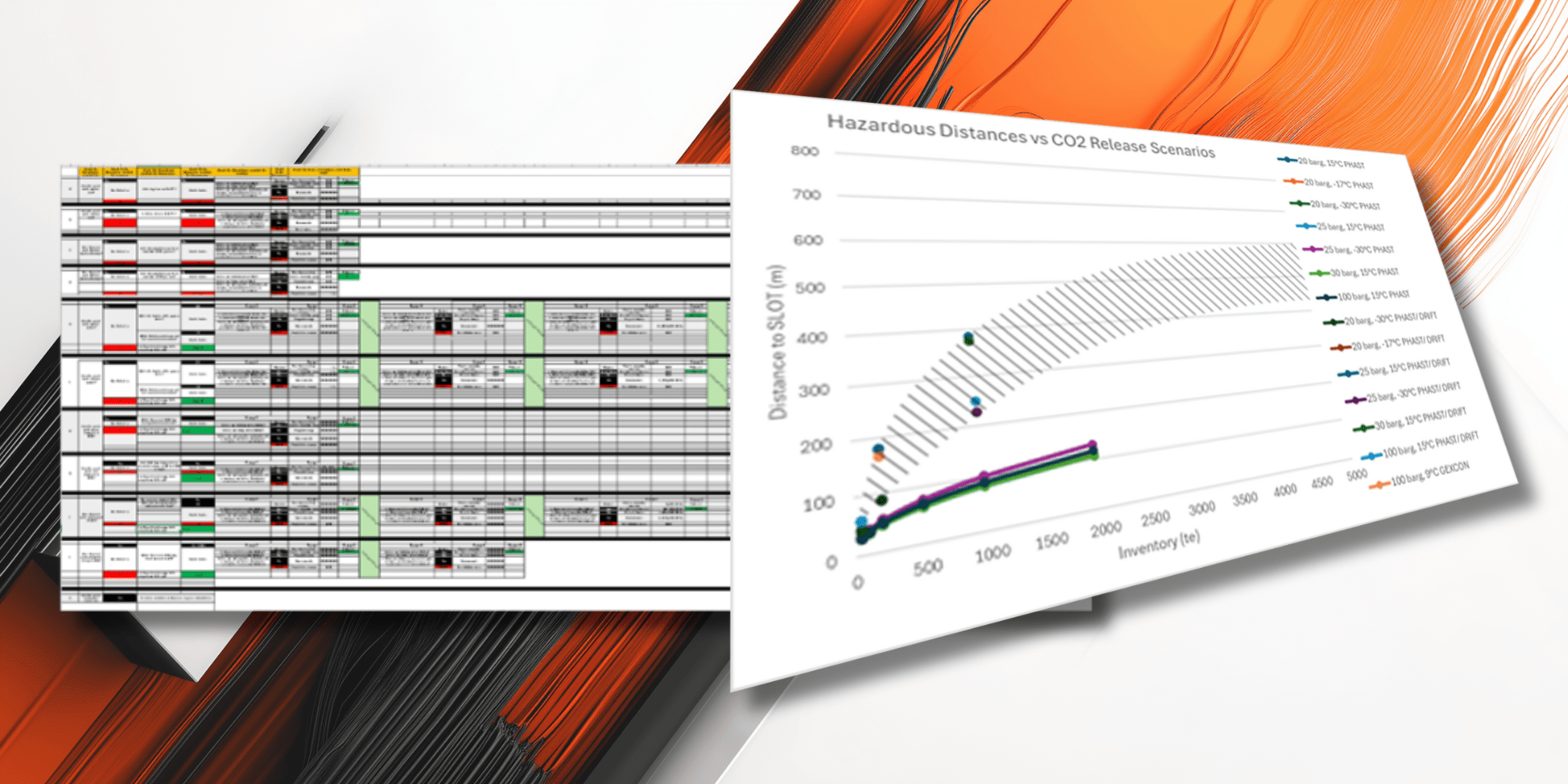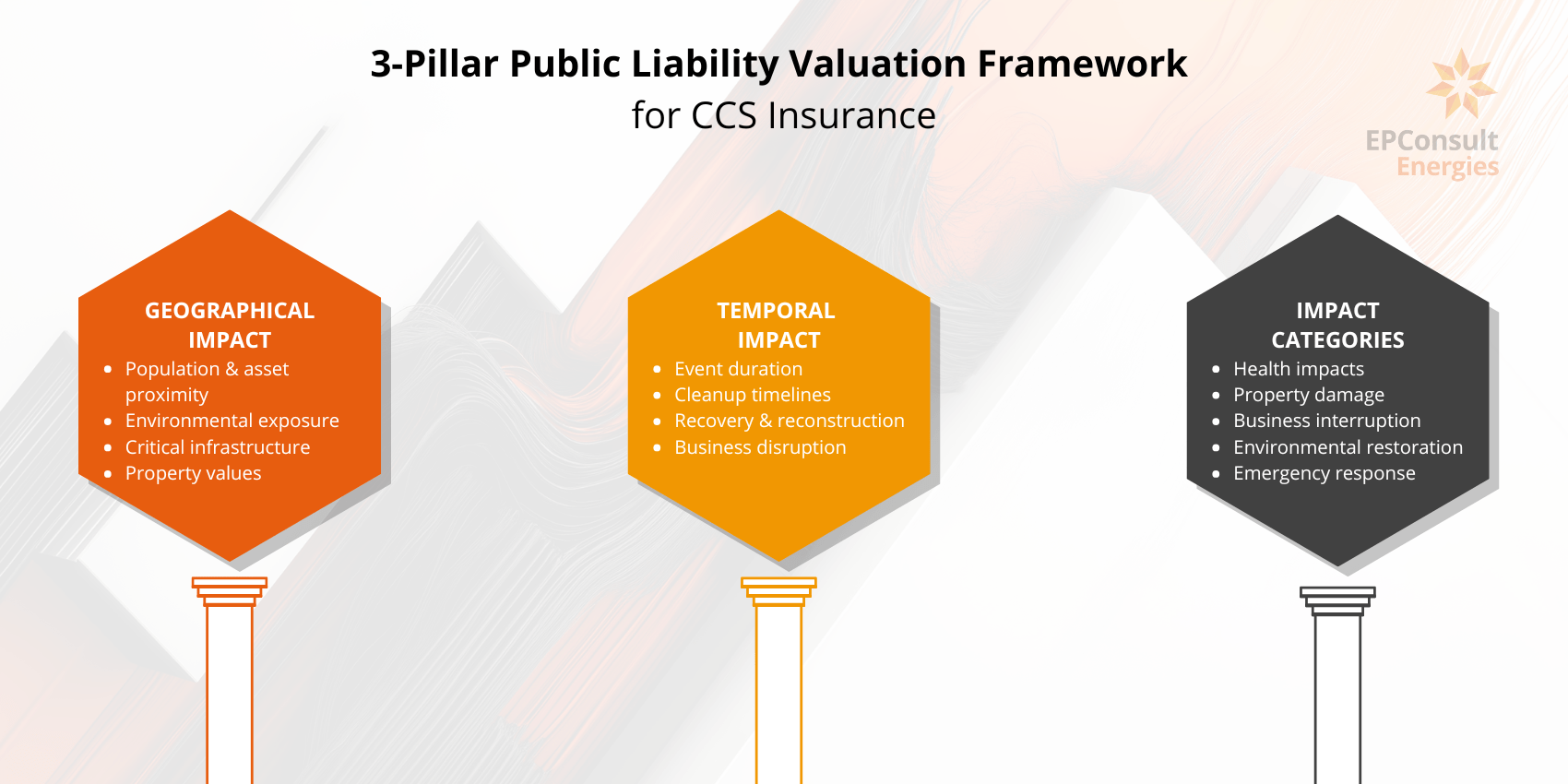
EPConsult Energies Develops Europe's First CCS Risk Insurance Tool for Danish Government
How a groundbreaking carbon storage risk assessment framework is shaping the future of CCS project insurance and public liability management across Europe
A Historic Breakthrough in Carbon Storage Safety
Picture this: You're tasked with something that has never been done before in Europe. The Danish government needs to know exactly how much insurance coverage to require for carbon capture and storage projects, but there's no playbook, no precedent, no existing framework to guide the decision.
The stakes couldn't be higher. Get it wrong, and you either stifle critical climate technology or leave communities vulnerable to unquantified risks.
This was the challenge that landed on our desk. Working hand-in-hand with our partners at Sweco, we not only met the brief, we created Europe’s first comprehensive CCS risk insurance methodology, now setting the standard across the continent.
We’re proud to have delivered a groundbreaking risk assessment framework to the Danish Energy Agency, one that transforms how Europe approaches carbon storage safety. What began as Denmark’s urgent regulatory need has evolved into a game-changing tool that other nations are already looking to adopt.
What Makes This Achievement So Special?
Europe's First
We've built the continent's inaugural structured approach to CCS public liability risk assessment, literally writing the book on how to do this safely and transparently.
Scientifically Rigorous
Our methodology doesn’t just meet international standards (ISO 31000 and ISO 17776), it exceeds them, incorporating cutting-edge research and real-world expertise from across the energy sector.
Practically Brilliant
We've transformed complex engineering calculations into an intuitive, user-friendly tool that regulators can actually use to make informed decisions about carbon storage insurance requirements.
Future-Focused
This isn’t just about Denmark, we have created a template that’s already inspiring similar initiatives across Europe, accelerating the safe deployment of climate-critical CCS technology.
Together, these elements have produced a pioneering risk insurance tool that gives regulators confidence, provides developers with clarity, and ensures communities have the protection they deserve as we scale up carbon storage to meet our climate goals.
The Challenge: CCS Insurance Risk Assessment
As carbon capture and storage projects transition from pilot programs to commercial deployment across Europe, a fundamental question has emerged:
How do you accurately calculate the public liability risk associated with large-scale CO₂ transport and storage operations?
This challenge is particularly acute for regulators establishing new CCS licensing frameworks. Without a structured methodology to assess third-party risks, including potential impacts on communities, property, and ecosystems, it becomes impossible to set appropriate insurance requirements for project operators.
Why This Matters for CCS Development
Carbon capture and storage play a crucial role in achieving net-zero emissions targets, particularly for hard-to-abate industrial sectors. However, public acceptance and regulatory confidence depend on demonstrating that CCS operations can be conducted safely, with clear accountability for potential risks.
Denmark’s proactive approach to developing a CCS risk insurance framework positions the country as a leader in responsible carbon storage deployment, while providing a template for other European nations.

A three-pillar model to assess third-party risks from carbon storage operations, supporting insurance and regulatory decisions.
Methodology: A Structured Approach to CCS Risk Assessment
Phase 1: Comprehensive Hazard Identification (iHAZID)
EPConsult Energies facilitated intensive integrated Hazard Identification (iHAZID) workshops in Copenhagen, bringing together leading experts from:
- Oil & gas engineering and operations
- CO₂ transport and storage systems
- Risk management and safety assessment
- Geoscience and well integrity
- Academic research (including Technical University of Denmark – DTU)
The workshops systematically evaluated 10 critical CCS system components:
- Injection wells (active and legacy)
- CO₂ processing facilities
- Onshore and offshore pipelines
- Maritime transport systems
- Rail and road transport
- Intermediate storage facilities
- Wellhead infrastructure
- Subsurface storage formations
- Monitoring and verification systems
- Emergency response equipment
For each component, Major Accident Hazards (MAHs) were identified using consequence-based ranking to isolate worst-case scenarios requiring detailed analysis.
Phase 2: Quantitative Consequence Modelling
The risk assessment incorporated cutting-edge scientific research and modelling techniques:
CO₂ Release Dynamics
- Dense phase CO₂ transport behaviour analysis
- Jet release dispersion modelling
- Asphyxiation risk assessment using UK HSE SLOT/SLOD criteria
- Overpressure impact calculations
Environmental Impact Assessment
- Population exposure radius calculations
- Building and infrastructure damage thresholds
- Ecosystem and biodiversity impact zones
- Water source contamination scenarios
Data Sources
- International CCS incident databases
- Danish demographic and infrastructure datasets
- Peer-reviewed scientific literature on CO₂ toxicity and dispersion
Phase 3: Insurance Valuation Framework
The three-pillar valuation approach provides comprehensive liability cost estimation:
- Geographical Impact Assessment
- Population density analysis within impact zones
- Building density and property value calculations
- Critical infrastructure proximity (hospitals, schools, transport)
- Environmental assets (protected areas, water sources)
- Temporal Impact Evaluation
- Event duration and immediate response timeframes
- Disruption periods for affected communities and businesses
- Cleanup and remediation timelines
- Long-term recovery and reconstruction phases
- Impact Category Quantification
- Health effects (acute and chronic exposure)
- Property damage (residential, commercial, industrial)
- Business interruption (lost revenue, supply chain disruption)
- Environmental restoration (biodiversity, soil, water)
- Emergency response costs (evacuation, medical treatment)
⚠️ Note: The framework focuses exclusively on third-party public liability; operator losses and business impacts are not included in the insurance calculations.
Phase 4: Digital Tool Development
The CCS Risk Insurance Tool transforms complex risk assessments into practical regulatory applications:
Key Features
- Intuitive Excel interface with built-in logic systems
- Drop-down scenario selection for different CCS configurations
- Customizable input parameters (pipeline length, population density, storage capacity)
- Automated financial calculations based on Danish reference data
- Standardized reporting for regulatory submissions
- Scenario comparison capabilities for optimisation
User Benefits
- Regulators: Evidence-based insurance requirement setting
- Project Developers: Transparent risk assessment and planning
- Insurers: Standardized risk evaluation methodology
- Public: Increased confidence in CCS safety governance
Industry Impact and European Leadership
Setting New Standards for CCS Regulation
This Danish initiative represents a regulatory breakthrough in European CCS development. While countries across the EU are rapidly advancing carbon storage projects, few have established comprehensive frameworks for public liability risk assessment.
Key Differentiators
- First operational national methodology in Europe
- ISO-aligned risk assessment standards (ISO 31000, ISO 17776)
- Multi-stakeholder validation through expert workshops
- Practical implementation via user-friendly digital tools
- Transparent public accountability through third-party focus
Implications for the European CCS Market
The success of Denmark’s approach is likely to influence CCS regulation development across Europe:
- Regulatory Harmonisation: Other EU member states may adopt similar methodologies, creating more consistent cross-border CCS project standards.
- Investment Confidence: Clear insurance frameworks reduce regulatory uncertainty, potentially accelerating private sector CCS investment.
- Technical Excellence: The rigorous engineering approach demonstrates how complex industrial risks can be systematically managed and communicated.
- Public Trust: Transparent risk assessment methodologies support social licence for large-scale carbon storage deployment.
EPConsult Energies' Role and Expertise
As project lead for iHAZID workshops and risk methodology design, EPConsult Energies brought critical capabilities to this groundbreaking study:
Technical Expertise
- Oil & gas safety assessment with decades of North Sea experience
- Geotechnical project management across complex subsurface operations
- Public risk modelling for major infrastructure developments
- Regulatory compliance across multiple European jurisdictions
Project Contributions
- Workshop facilitation bringing together diverse expert stakeholders
- Risk methodology development aligned with international standards
- Consequence modelling using advanced engineering analysis
- Tool validation, ensuring practical regulatory application
Looking Forward: The Future of CCS Risk Management
Commercial Deployment Readiness
As CCS technology moves from demonstration to commercial-scale deployment, robust risk governance becomes increasingly critical. This Danish framework provides a foundation for:
- Scaling CCS Operations: Standardised risk assessment enables larger, more complex carbon storage projects while maintaining public safety standards.
- International Collaboration: The methodology can be adapted for cross-border CCS projects, supporting European Green Deal objectives.
- Technology Integration: As CCS technology evolves (e.g. direct air capture, utilisation pathways), the framework can incorporate new risk scenarios.
- Insurance Market Development: Clear risk quantification supports the emergence of specialised CCS insurance products and competitive markets.
Continuous Improvement and Adaptation
The tool’s Excel-based format allows for ongoing updates as:
- New scientific research improves understanding of CO₂ behaviour and impacts
- Operational experience from deployed CCS projects provides real-world validation
- Regulatory requirements evolve with changing policy priorities
- Technology advances introduce new components and risk scenarios
EPConsult Energies’ collaboration with Sweco and the Danish Energy Agency has produced more than just a risk assessment tool; it has created a new paradigm for responsible CCS development. By combining rigorous engineering analysis with practical regulatory implementation, this project demonstrates how climate-critical infrastructure can be deployed safely and transparently.
As Europe accelerates toward carbon neutrality, the need for systematic risk management in CCS operations will only grow. This Danish framework provides a proven model for balancing ambitious climate goals with robust public safety governance.
